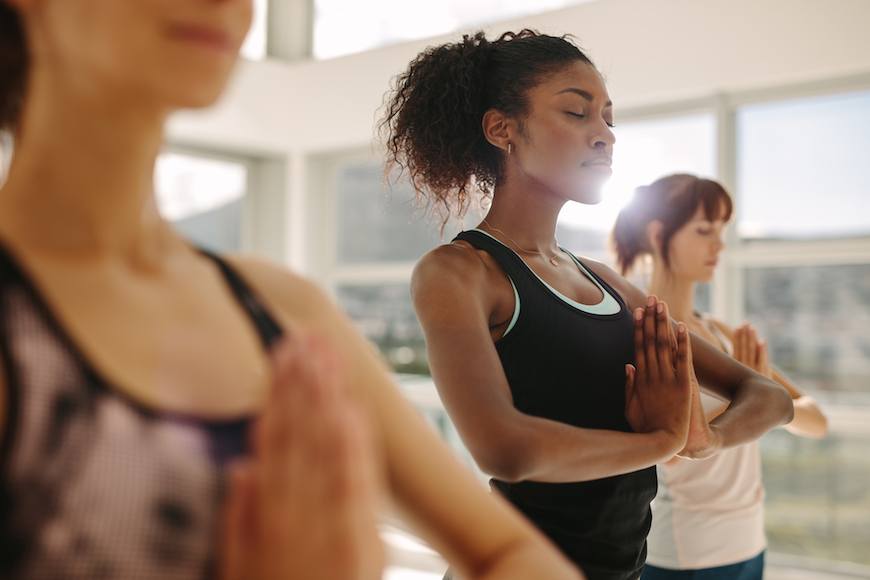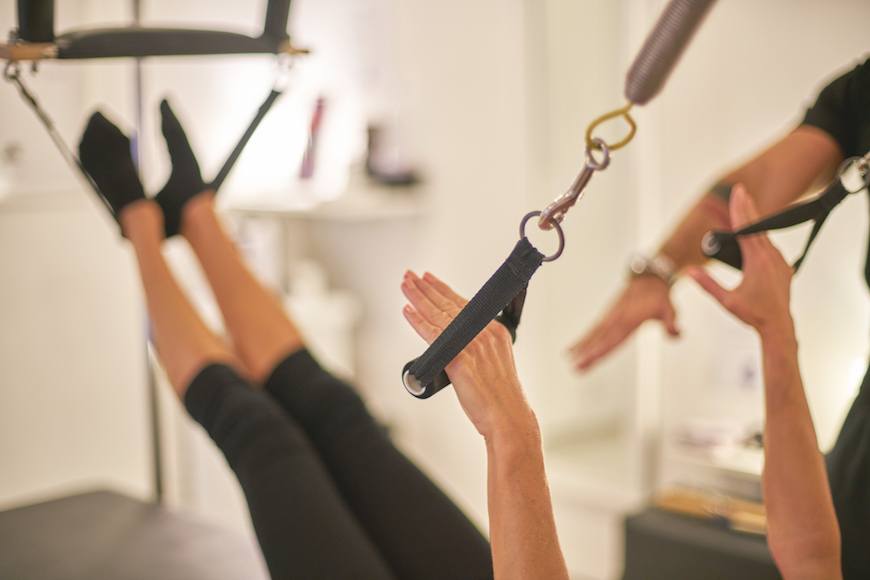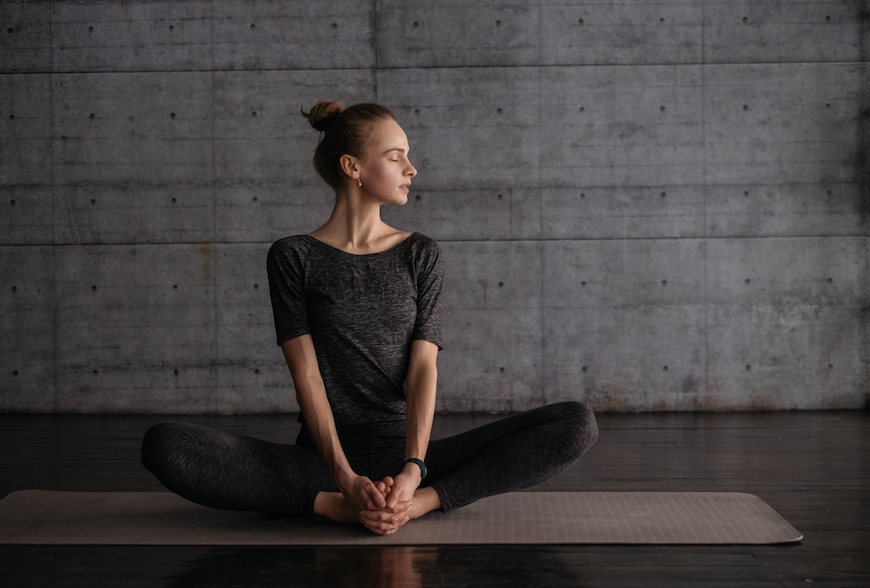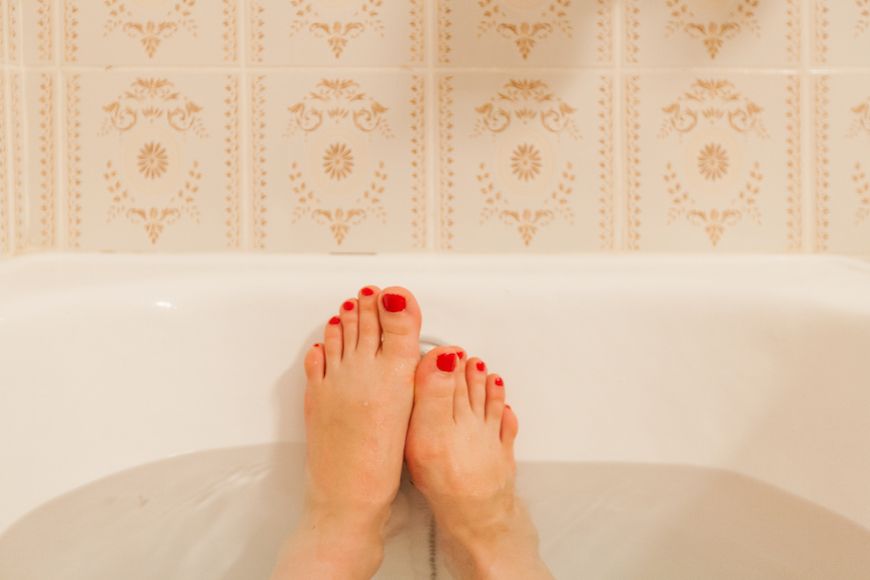How to Avoid Over-Stretching in Yoga and Pilates—Because Yes, It Happens
Over-stretching happens when you work a muscle or joint too hard. "It's the difference between soreness, which is okay, and sharp pain," says Heather Peterson, the chief yoga officer at CorePower Yoga. "When you’re stretching, you’re always supposed to push yourself a little bit—which isn't the most comfortable feeling—but it should never be actually hurting you," adds Tianna Strateman, the vice president of education at Club Pilates. "There’s a fine line between getting in somewhere that’s a little tight and actually causing a tear in a ligament or something of that nature." Uhh, I'd say so. Here, both experts share their tips for avoiding over-stretching—and offer advice on how to recover if (eek!) it's a little too late.

Ease into the poses and exercises
Both experts say there are a few key reasons why over-stretching can happen. One: Not warming up properly. Peterson says this can occur particularly in a heated yoga class because the high temps get you sweating before your muscles are fully warmed up. "If you're taking a heated yoga class, don't go your full-depth in the moves," she advises. "For the first half of the class, only stretch into the poses about half as much as what you actually can, and then you can move into 75 percent of your movement range for the last half of class." This way, she explains, you give your muscles time to actually warm up before really starting to activate them.
Even if you're not in a heated room, Strateman says it's important to warm up the body slowly before going full force into the workout. "We start by warming up the lower part of the body and then move upwards before we go into full body movements," she says of how her Club Pilates classes start. This can be done on the reformer or the floor—the key is just to gently move your body before going into deeper stretches.

Pay special attention to your hamstrings and lower back
Peterson explains that there are several key yoga poses where people are most prone to over-extend: forward fold, crescent lunge, kneeling crescent, and full split pose. "Especially if you sit all day, it feels really good to do these poses, so it's easy to go deeper into them than your body is ready for," she says. "What happens is, sitting all day can cause the glutes, hamstrings, hip flexors, and low back to weaken. So people want to stretch out those areas, but then they overdo it." If your hamstrings are tight, she recommends slightly bending your knees as you flow into a forward fold, and to not go quite so deep into lunges and split poses.

{{post.sponsorText}}
Strateman says similar moves can be pain points—literally—in Pilates: "The single thigh stretch, or even a lunge—which can be extended fully into almost a split—people get excited about," she says. "It's important to remain in proper form, with your hips square and facing the front." She says some people also over-extend their hamstrings when their feet are in straps, so if your hamstrings are tight, it's important to keep a slight bend to them and never go in or out of a move too quickly.
"The lower back is another place to pay attention to," she says, echoing Peterson's call-out that sitting all day can weaken it. "In moves where you're extending the lower back, you want to make sure you're engaging the core, which are the opposing muscles. Otherwise, it gets pretty easy to dump your weight into your lower back and cause pain and injury there."

Keep your mind-body connection strong
Both experts say that the main reason why someone over-extends a muscle or joint during yoga or Pilates is because they've stopped focusing on exactly what the practice is about: the mind-body connection. "What's most important is to listen to your body so you know your limits," Strateman says. "Of course you want to push yourself further so you're growing and improving, but not so much that you're causing injury or harm."
Peterson echoes her saying: "It's when you lose that mindfulness that is so important to the practice that injury can happen."

How to heal from over-stretching
Even when you do everything you can to prevent over-stretching, sometimes, it can still happen. Both experts say that the best way to recover—no matter what part of the body is overworked—is to let it rest. "It should feel better in a few days, but if it's a week later and still hurts, that's when you should see a physical therapist," Strateman says.
Peterson adds that an Epsom salt bath is a great way to show your body some love when it's overworked, adding two to four cups (yep, that much) into steaming, hot water. "It sounds old-fashion, but it works by pulling magnesium in through the skin and helping your body get rid of the lactic acid that's causing the soreness on a biochemical level," she explains. Add in a few drops of your fave essential oils and your healing method just became a luxurious self-care treat.
Despite the risk of over-stretching, Strateman and Peterson both say it's totally fine to do yoga or Pilates every day, if you choose to. The key is to listen to your body and be mindful of your limits. And honestly, that's good advice to follow no matter what your workout of choice is.
Another way to show your body some love is with these three yoga poses that double as giving your body a massage. No wonder it's Jessica Biel's workout of choice.
Loading More Posts...